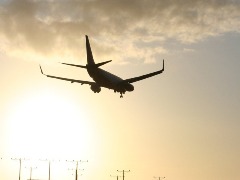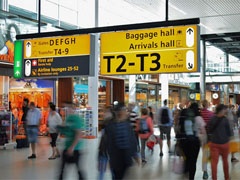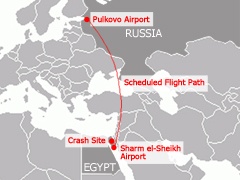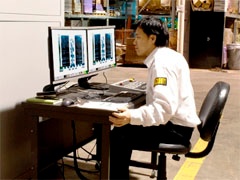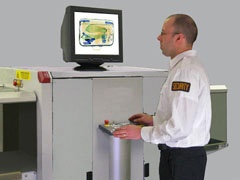Aviation is a complex industry that is constantly growing. According to IATA, over 3.7 billion passengers will fly this year. In a day, approximately 100,000 total flights take place and more than 16 billion USD worth of goods travel by air.
The global aviation industry is heavily relied upon by many and the demand for air travel will only grow. In fact, experts predict it will double over the next 20 years. That’s why security has and will always remain a top priority for those in aviation. So what types of challenges related to security does the industry face today?
Read More
Topics:
Aviation Security,
Trends,
Cargo Security,
Security Threats,
Transportation,
Current Events
Presently, passenger screening is controlled by the individual airports conducting it - each responsible for the security of their facility and the passengers moving through. Unfortunately, not all airports have the same level of security. Some fall under par while others go above and beyond.
Because of this inconsistency, a very early concept has been thrown around the industry. This concept asks us to take a look at security screening through a hub and spoke perspective. Roughly, this means sending passenger aircrafts to airports with established security controls for screening before heading to their final destination. Could this idea work or would it make situations even more complicated?
Read More
Topics:
Aviation Security,
Trends,
Transportation
I recently attended an aviation security conference in Dublin, Ireland. The speaker panels were well organized and the topics were very relevant in view of the many threats commercial aviation must mitigate. However, there was a common theme flowing through the conference that stuck with me perpetrated by the International Air Transport Association (IATA) who sponsored the event. That theme is simply this – IATA is all about the passenger experience.
Read More
Topics:
General,
Transportation
No one can deny that technology has evolved immensely in a short amount of time. Today’s technologies allow us to do things that weren’t possible years ago. 3D printers, encrypted phones, and drones are examples of how technology has advanced.
Despite the best intentions, there will still be those who will use new technology with bad intentions. Because technology is widespread and readily available for global consumption, it is often difficult to control who uses it. So when powerful technology gets in the wrong hands, it could spell disaster.
Read More
Topics:
Trends,
General Security,
Security Threats
We’ve said it before and we’ll say it again – Today’s X-ray systems are currently in their most stable form and they’ll be around for quite some time. The screening technology is reliable and has proven to be effective when used by trained X-ray operators for threat detection. Currently, there is no technology existing in the market to replace conventional X-ray in terms of cost and speed.
Manufacturers have even started to develop 3D imaging technology to integrate into their systems – thus extending the life of conventional X-ray further. This technology brings flat 2D X-ray images to life by giving them depth while providing a comprehensive overview of screened baggage and cargo for 3D image interpretation.
Read More
Topics:
Aviation Security,
Trends,
Cargo Security
The recent upswing in terrorist activities is troubling. Terrorists have gotten smarter and more tactical with how they carry out their attacks. Although they haven’t stopped targeting the air industry as evidenced with the recent bombing of Metrojet Flight 9268 over Egypt, they have shifted toward more ground attacks.
Clearly, these attacks on places of worship, markets, cafes, hotels, and stadiums are becoming more common than we would like. Because of this, there are concerns of security especially in countries with open borders. This has some people asking whether Europe’s open border policy is making it easier for terrorists and criminals to do business. If so, would it be wise for Europe to bring back its internal borders?
Read More
Topics:
Trends,
General Security,
Ports & Borders,
Critical Infrastructure,
Security Threats,
Current Events
Sadly, another air tragedy has struck. Nearly two weeks have passed since Metrojet Flight 9268, an Airbus 321 jetliner, crashed in the Sinai Peninsula. The plane was headed from Sharm el-Sheikh, Egypt to St. Petersburg, Russia when it came apart in the sky shortly after takeoff, killing all 224 people on board.
Although the incident is still under investigation, speculations are coming in regarding its fate. Could it have been an equipment malfunction since major repairs were done to the aircraft years earlier? Could it have been a technical issue unrelated to the repairs? Or could it have been a bomb planted there intentionally by ISIS affiliates?
Read More
Topics:
Aviation Security,
Security Threats,
Transportation,
Current Events
X-ray systems are deployed at security checkpoints in many different industries. X-ray operators use them to screen belongings, mail, and cargo. In real-time, these operators must be able to view an X-ray image and promptly make a decision about it - whether the scanned items are safe to proceed or if further inspection is required.
To get to that point, there are a few fundamental topics X-ray operators must have a solid understanding of first. Help operators become successful at X-ray screening on the job by ensuring your X-ray equipment training includes these critical topics.
Read More
Topics:
Security Training,
Aviation Security,
Training & Development,
General Security,
Cargo Security,
Ports & Borders,
Critical Infrastructure,
Transportation
Currently, X-ray systems are in their most stable form. They have become a proven security screening technology and are used in many markets around the world including transportation, critical infrastructure, and ports & borders.
Until X-ray equipment manufacturers invent a groundbreaking way to revolutionize the X-ray machine and push it to the next level, today’s X-ray systems will continue to dominate the security screening industry.
Read More
Topics:
Security Training,
Trends,
General Security,
Ports & Borders,
Critical Infrastructure,
Transportation
We are about two-thirds into 2015 and thought it would be interesting to follow-up on a blog post published at the beginning of this year: Aviation Industry Trends, Predictions & Advice for 2015. The original blog post written by our President, Michael Rooksby, listed some aviation industry trends, predictions, and advice for 2015 as given by experts in the industry.
This week, I sat down with Michael to discuss how the expert predictions were panning out so far and to get a better understanding of his own thoughts and insights into the aviation industry. Here’s the dialogue from our Question and Answer session:
Read More
Topics:
Security Training,
Aviation Security,
Trends,
Transportation

